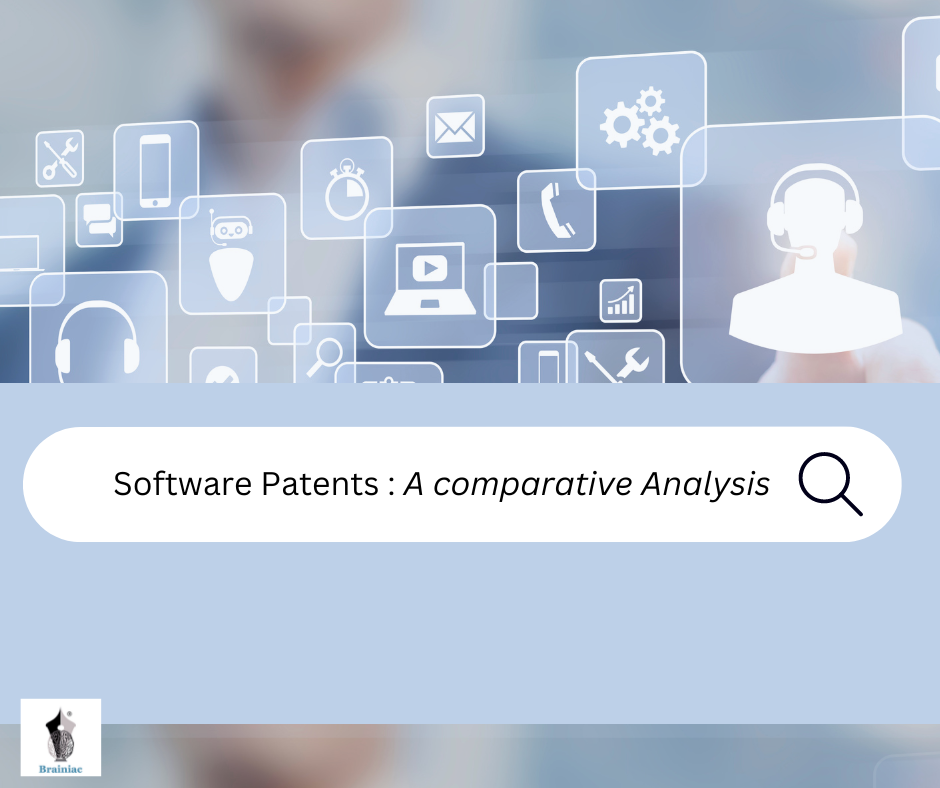Introduction
Over the course of the last few decades, the global software industry has experienced growth on an unprecedented scale, which has fundamentally altered the ways in which we work, communicate, and live. The current state of the law in regard to software patents is a topic of significant importance due to the fact that software continues to play an essential part in the formation of modern society. In this article, we will delve into the complexities of software patents by contrasting the regulatory frameworks of two important jurisdictions, namely India and the United States.
Understanding Software Patents
A software patent is a legal instrument that confers exclusive rights on a particular software invention to its holder. This includes the right to prohibit unauthorised reproduction, use, sale, or importation of the patented software. The primary purpose of software patents is to encourage innovation by incentivizing inventors to invest time and resources in creating new and useful software solutions.
A brief Overview
(A)Indian Patent Act, 1970
The Indian Patents Act, 1970 serves as the foundation for patent law in India. Since its inception, the act has been subject to a plethora of amendments in order to bring it into compliance with international intellectual property standards. Historically, this act posed ambiguity for software patents. The patentability of “computer programmes per se” is expressly precluded by Section 3(k) of the Act. This indicates that software cannot be patented in India. Nevertheless, software combined with hardware or other patentable inventions may be patented.
Under the Indian Patents Act, the key criteria for patentability are novelty, non-obviousness, and industrial applicability. The invention must demonstrate a technical contribution and solve a technical problem within the context of software. In general, only algorithms and business methods are not considered patentable.
(B)US Patent Law:
The United States has a very different legal framework for software patents. The U.S. Patent and Trademark Office (USPTO) has historically granted patents for software-related inventions, resulting in a significant number of software patents. In 1981, the landmark case Diamond v. Diehr established that software may be patentable if it is tied to a tangible process or apparatus and produces a useful, concrete, and tangible result.
The most important criteria for patentability in the United States are novelty, non-obviousness, utility, and eligible subject matter. Recent court decisions, such as Alice Corp. v. CLS Bank in 2014, have made clear that abstract ideas implemented using generic computer technology are not patentable. In order to qualify for a patent, software inventions must go beyond conventional, generic implementations.
A comparative Analysis
India and the United States approach software patents differently due to their distinct legal histories and policy considerations. India’s emphasis on technological contribution and problem-solving is consistent with its desire to prevent the patenting of non-technical or trivial software innovations. The United States, on the other hand, has historically fostered a more permissive environment for software patents, with the goal of fostering innovation in rapidly evolving technological fields.
However, both jurisdictions have encountered difficulties. In some cases, India’s approach has been criticised for stifling innovation, while the United States has been criticised for granting overly broad and ambiguous software patents, leading to litigation and patent quality concerns.
Software Protection in India
While software is not eligible for patent protection under Section 3(k) of the Patents Act of 1970 in India, it is nonetheless protected by other forms of intellectual property rights and contractual agreements. Copyright law is a prevalent method of software protection. According to the Copyright Act of 1957, software is considered a literary work, and its source code is automatically protected upon creation and fixation on a tangible medium. This means that the original creator of a piece of software has the exclusive right to reproduce, distribute, and modify it.
Moreover, trade secrets can play a role in safeguarding software innovations. Companies can prevent unauthorised access and use by keeping their software algorithms, processes, and confidential information secret and implementing stringent security measures. This protection mechanism is especially useful when the software’s functionality can be kept secret and the company’s competitive advantage is dependent on it.
In addition, software-related contracts, and agreements, such as end-user licence agreements (EULAs) and non-disclosure agreements (NDAs), are frequently used to define the conditions under which software may be used, shared, or distributed. Frequently, these contracts prohibit reverse engineering, unauthorised duplication, and distribution of the software.
Although software patents may not be readily available in India for all types of software innovations, a combination of copyright protection, trade secrets, and contractual arrangements provides a comprehensive strategy for protecting software creations and encouraging innovation in the Indian software industry.
Conclusion
The issue of software patents continues to be a complicated and developing area of law. The Indian Patents Act of 1970 and U.S. patent law illustrate two distinct approaches: India’s emphasis on technical contribution and the U.S.’s willingness to grant patents for software-related inventions that produce tangible results. As the software industry continues to reshape the world, it remains a challenge for both jurisdictions to strike a balance between encouraging innovation and preventing patent rights abuse. As technology evolves and societal needs change, it is likely that patent law will continue to be clarified and modified.



